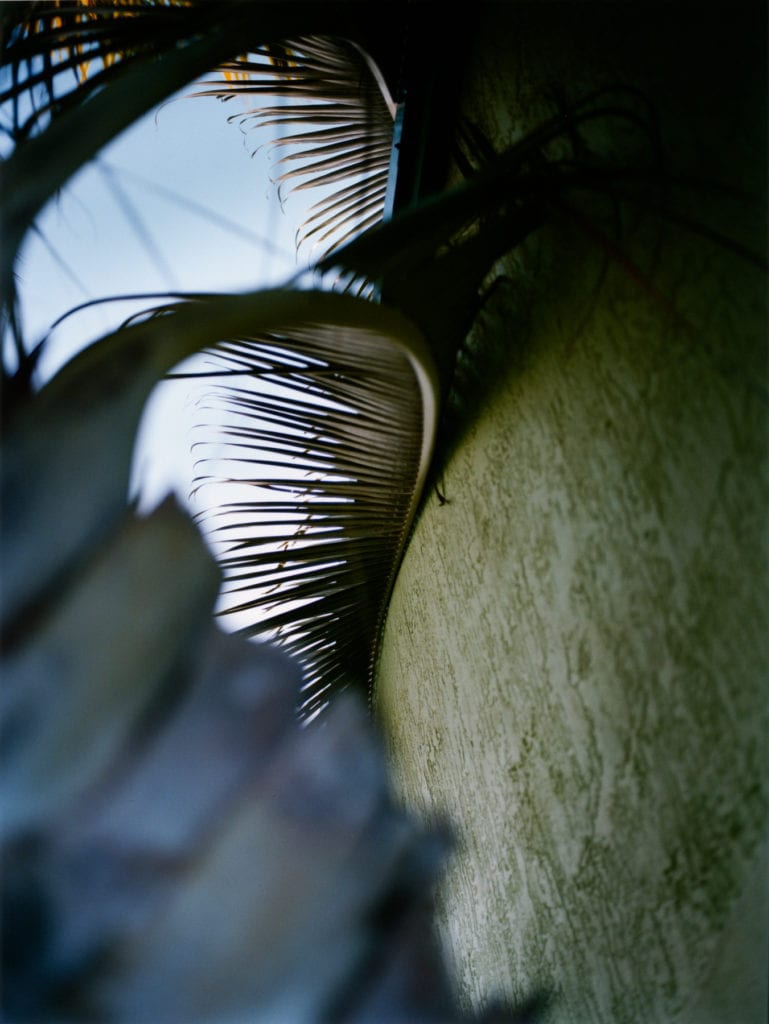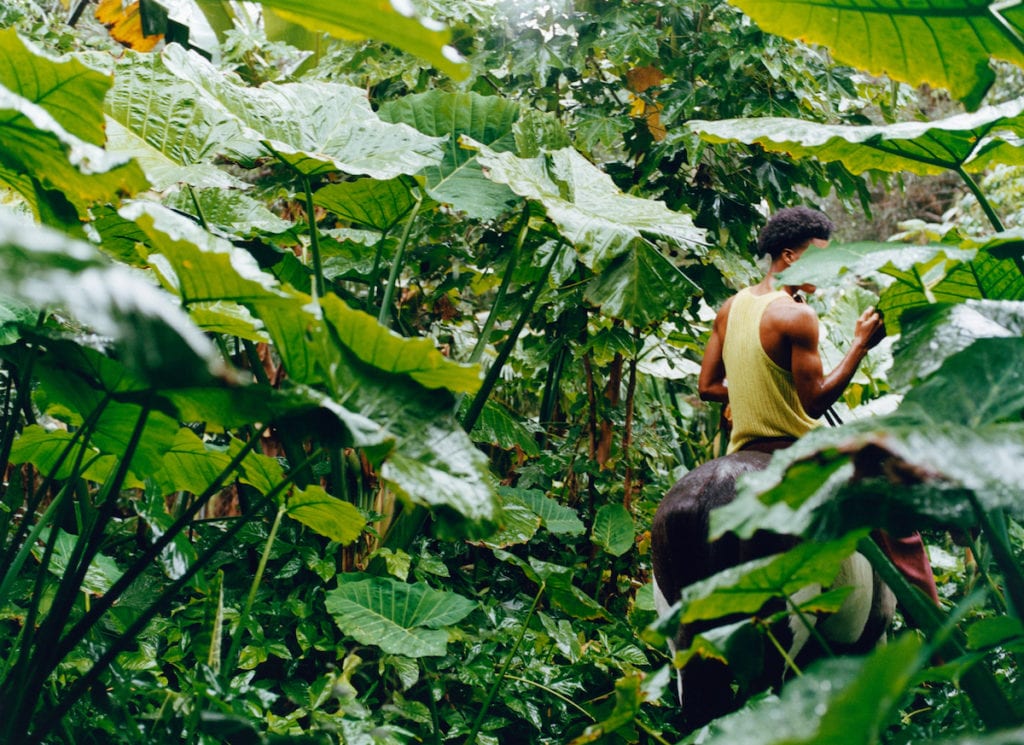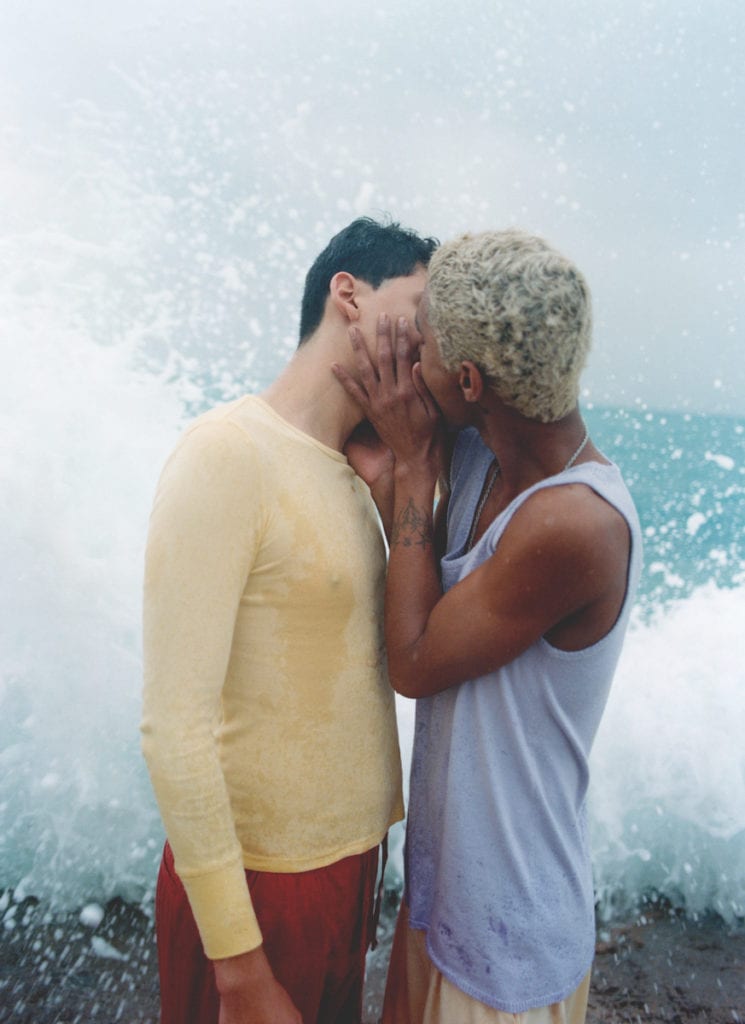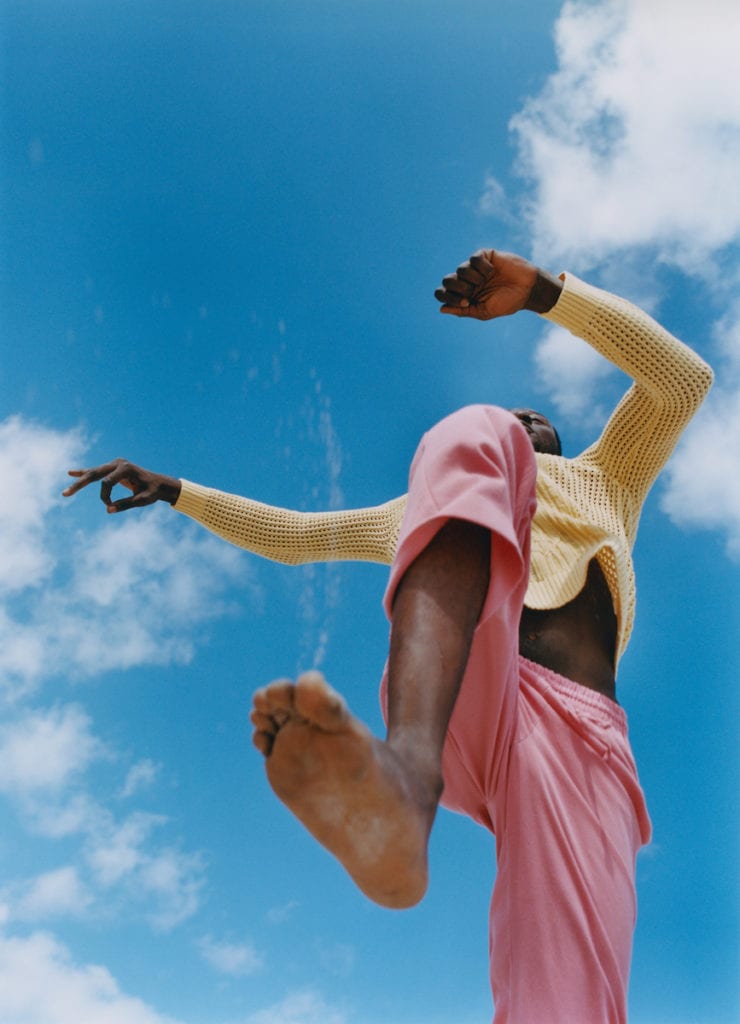Burning colours, golden light, and verdant scenery fill the backdrops of Josh Aronson’s Tropicana. Backdrops populated with Floridian youth — artists, activists, skaters; a cast of characters donning bright clothes — young and free.
“I grew up in a Florida, not unlike the one imagined here,” writes Monica Uszerowicz, in the book’s foreword — referencing the semi-fictional Florida city imagined on its pages. “A warm and lush haven of climbable trees and mulchy driveways, of coastal waters and grapefruit trees … And the perpetual light dancing on shower curtains, on tiles. Mesmeric and constant.”
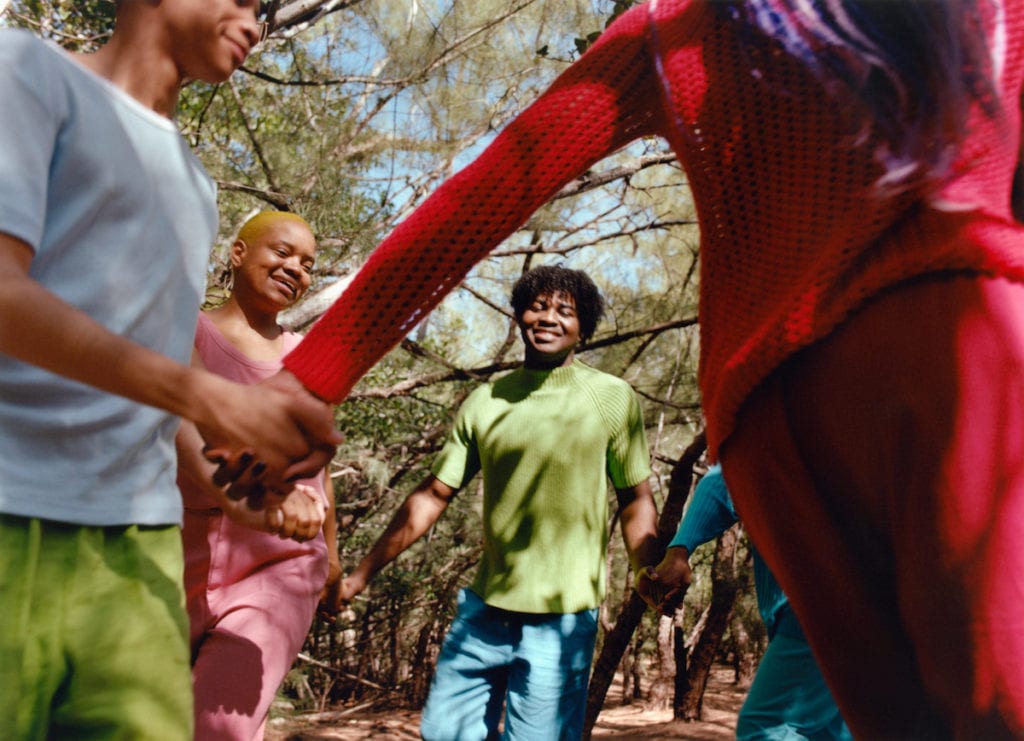
“And the perpetual light dancing on shower curtains, on tiles. Mesmeric and constant”
Monica Uszerowicz
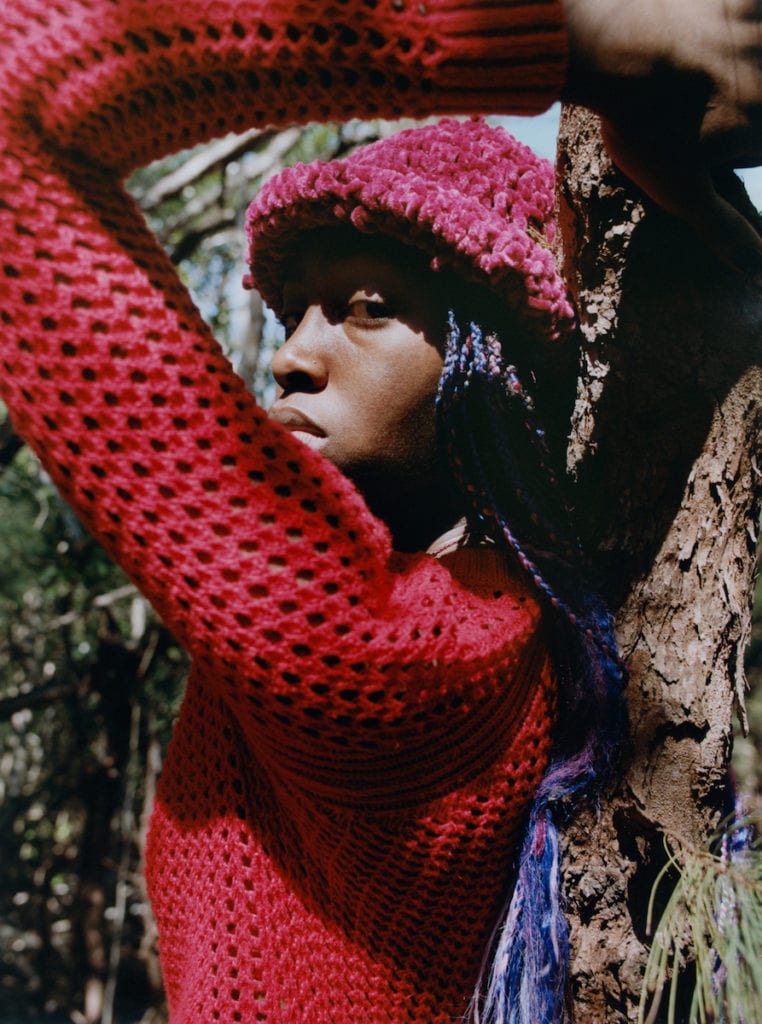
Aronson also grew up in Miami, and several of the photographs were taken in the corners of his childhood home. It was both nostalgia and frustration that compelled him to conceptualise of the project: a desire to reflect on his childhood in Florida and challenge the often inaccurate representations of the state, which dominate popular culture — Miami Vice, the Florida Man meme, Spring Breakers. Counter to the crime, hedonism, and drugs promulgated by these depictions, Tropicana hones in on Florida’s wild landscape, untamable climate, and rich youth culture. “We need to create room for dialogue, and different visual narratives about life in the state,” Aronson says.
One image depicts several boys moving through a field of palm trees; shirtless, their harmonised white trousers catch the glorious sun. The boys are skaters and Aronson photographed them, in part, because of their relationship with the land: “These are people who are carving their own spaces in the urban landscape — people who are engaging with Florida in their own ways.” Indeed, all the individuals featured in Tropicana have strong connections to the place: “I could not rely on my experience alone; I had to draw on the experiences of others,” continues Aronson, who cast a wide net to find people to collaborate with.
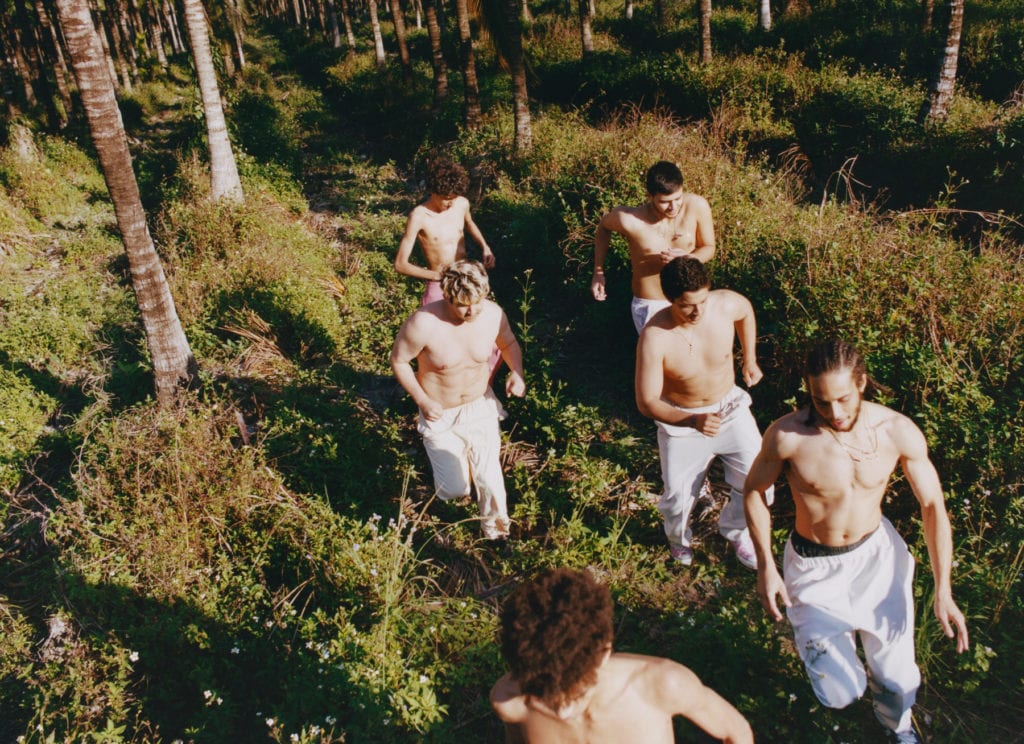
The individuals depicted are not just the subjects of the images that frame them; they are, in the words of Uszerowicz, co-authors — shaping and defining the work. “Young people — many of them local activists and artists — kiss and dance in the waters along the coast, in the Everglades, in woods bedecked with Spanish moss. They settle in trees like birds, pick ladybugs off their ankles, lay prone under a shower of petals,” writes Uszerowicz.
The Everglades, the woods, the sea — the landscape — are also central facets of the series, which celebrates the unruly and verdurous environments of Florida, but also warns of its fragility; the vulnerability of the coastal state to its tumultuous climate — only exacerbated by the ensuing climate crisis. “We do not have control over nature in Florida, or anywhere really,” says Aronson, “as much as we want to control our environment, the climate catastrophe is happening.”
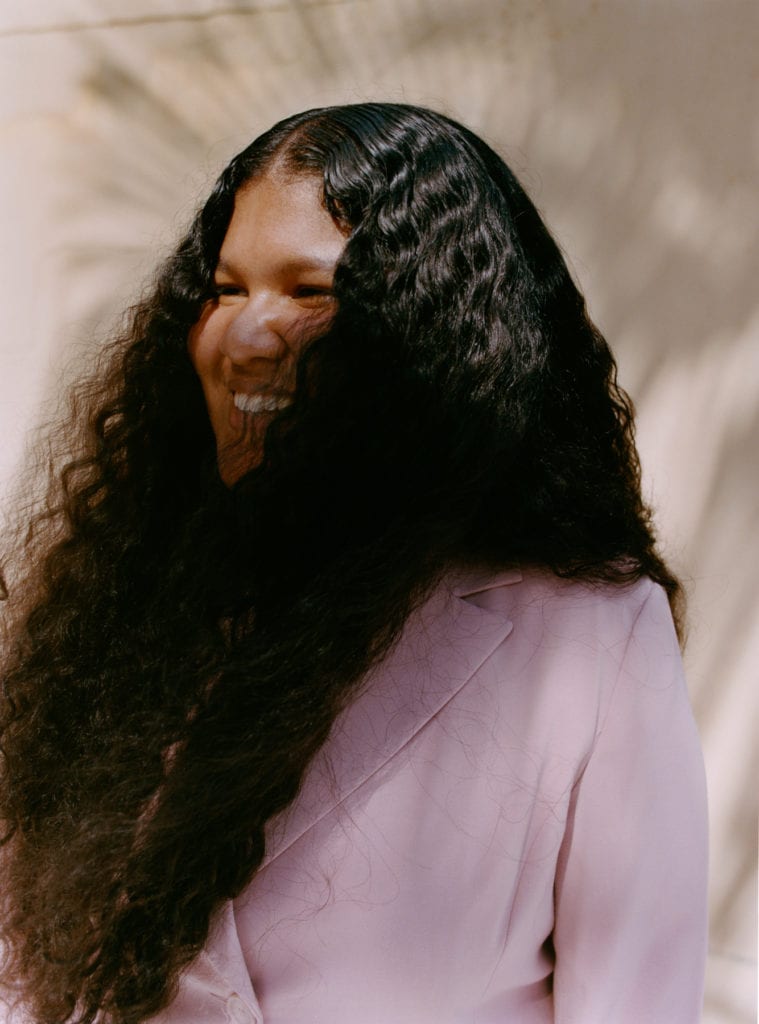
“They settle in trees like birds, pick ladybugs off their ankles, lay prone under a shower of petals”
Monica Uszerowicz
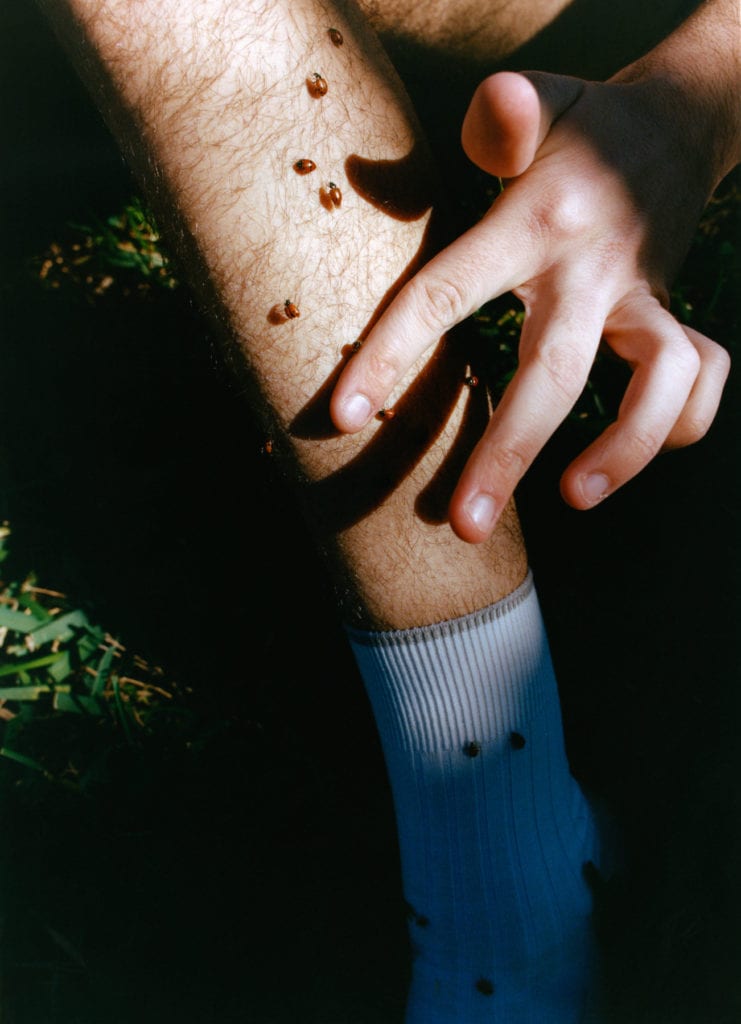
The first edition of Tropicana was published in May as Florida locked-down in the wake of Covid-19. The visceral images, brimming with movement and life, accrued new significance amid a pandemic emptying urban areas and evoking unease and anxiety. “When the book came out it immediately had this strange, nostalgic quality,” says Aronson — a time capsule of intimacy, and touch, of people and places.
However, the photographer also regards Tropicana as a portal to the future: a world in which nature is preserved, and in which people are free to live without the fear of prejudice and discrimination. “I wanted to bring more of the books into the world,” continues Aronson, “but if I did, I wanted to use the publication to support movements against racism and discrimination.” In light of this Aronson will donate 100 per cent of proceeds from the second edition to the Youth Concept Gallery — an organisation providing creative arts learning centres to incarcerated youth in the South Florida area.
Tropicana is available to purchase here. 100 per cent of the proceeds from the second edition will be donated to the Youth Concept Gallery — an organisation providing creative arts learning centres to incarcerated youth in the South Florida area.
